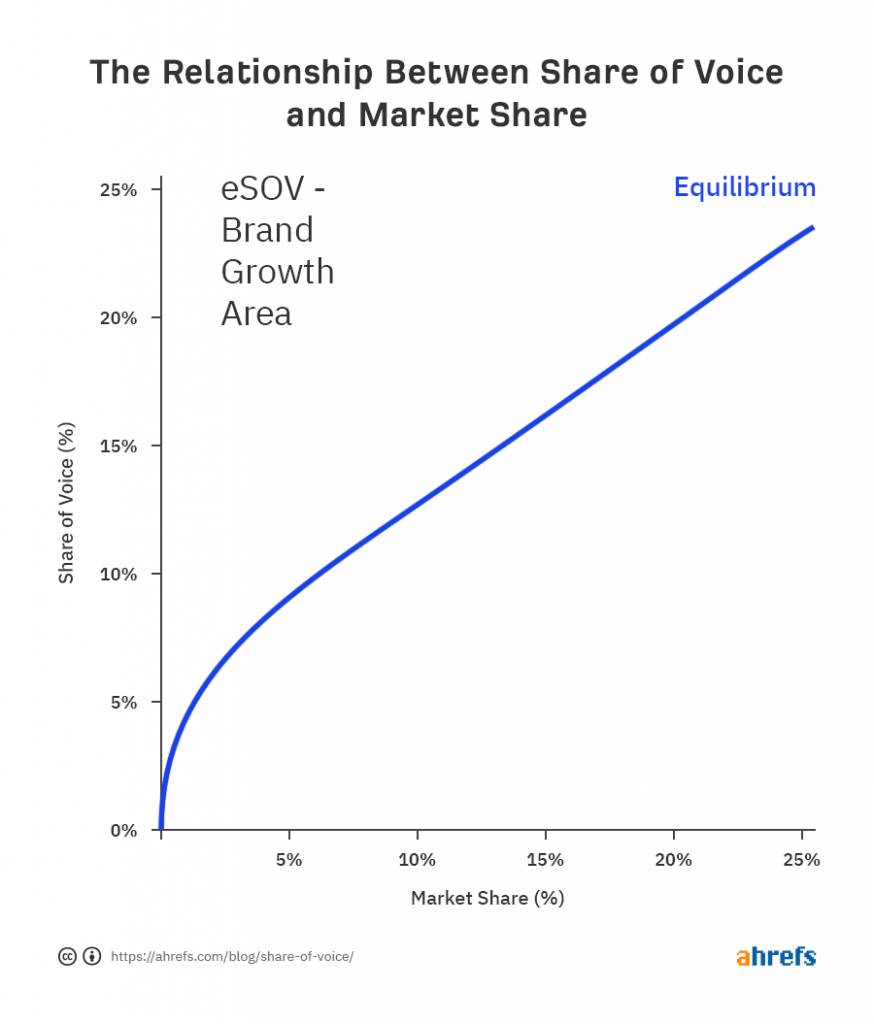Key Performance Indicators (KPIs) help you understand how your business is progressing towards its goals.
In the SEO world, you can find articles talking about tens of so-called KPIs, including bounce rate, dwell time, time on page, etc. These are vanity metrics that have no relationship with the overall marketing or business goals.
In reality, KPI-worthy metrics are few and far between and determine the action you take. You need to get these right
In this article, I’ll explain the ins-and-outs of the three useful SEO KPIs:
- SERP visibility
- Conversions attributed to organic traffic
- Assisted organic traffic conversions
Suitable for: Any website
Tied to: Market share
SERP visibility is the SEO version of one of the most important marketing KPIs: share of voice (SOV). It measures how visible your brand is in the market.
That’s important because there’s a strong relationship between SOV and market share. Generally speaking, the higher your SOV, the bigger your share of the pie. And the fact that it’s a relative metric makes it a more suitable KPI than organic traffic growth.

You can get a very rough sense of SERP visibility by comparing your estimated organic search traffic with your competitors. To do that, paste yours and their domains into Ahrefs’ Batch Analysis tool, then check the traffic column.

However, these numbers will be usually skewed because they include traffic from branded keywords, and those your competitors rank for that have no business value for you. For example, if one of our competitors offers social media marketing tools, then any search traffic to such topics is irrelevant for us.
For a more accurate sense of SERP visibility, paste the keywords that matter to you into Ahrefs’ Rank Tracker. Note that these should be the main keywords that encompass what your target audience is searching for (don’t bother with long-tails).
![]()
From there, head to the Competitors Overview tab and check the Visibility column:
![]()
That’s it. SERP visibility is a great KPI for everyone because you always have direct business competitors regardless of your business model.
Suitable for: Any e‑commerce or lead generation website
Tied to: Sales
This one isn’t much of a surprise. Organic conversions are the only SEO KPI on this list that most businesses already measure. If that’s you, fantastic, but there are a few things to do and keep in mind when using this data:
Choose your main conversion goals wisely
Common examples of website goals or conversion actions include visitors going through the checkout or subscribing to a service. Those are totally fine, but it doesn’t reflect its value to the business if people are buying multiple things at once.
So if you work for an ecommerce store, increasing the Average Order Value for the organic traffic segment would probably be a better KPI.
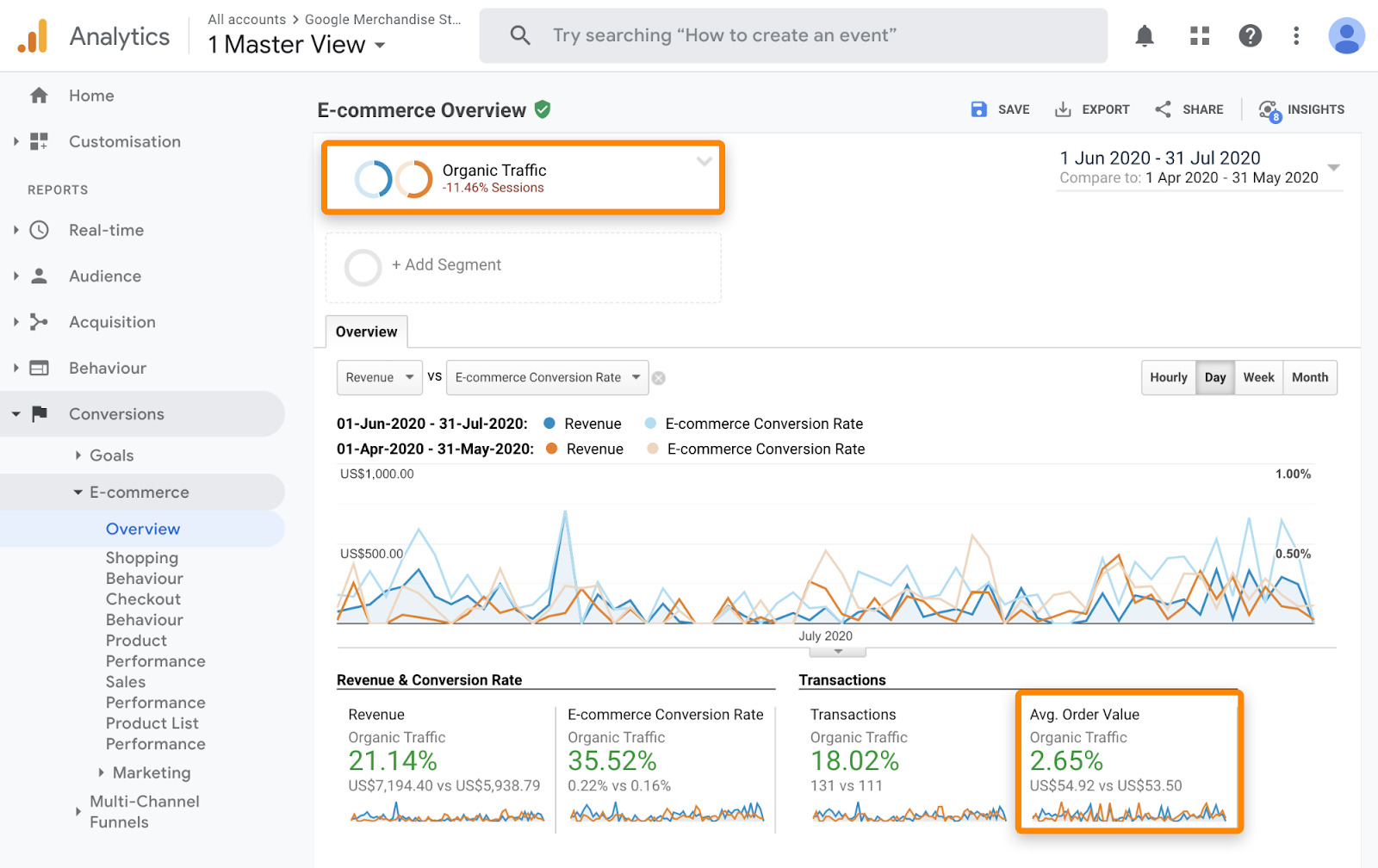
Or, if you want to get a little more advanced, you could track the gross margin or net profit per organic search visitor.
Make sure your analytics are set up correctly
Many things can go wrong when setting up Google Analytics or any other analytics software. I’d urge anyone that makes marketing decisions based on analytics first to understand how that data is collected and processed.
Learn more: 13 Google Analytics Tracking Mistakes (and How to Fix Them)
Take the results with a grain of salt
Regardless of how well your GA and data warehouse is set up, the data will still be skewed by things like ad blockers, the way Google handles attribution by default (more on that in the next KPI), etc.
The positive thing and main takeaway here is that we’re typically making a time comparison of data skewed the same way. That means a relative change in conversions should correspond with reality.
That said, make sure you’re comparing periods that make sense to compare. For example, if your business has seasonal sales swings, you would want to compare year-over-year results.

Suitable for: Any e‑commerce or lead generation website
Tied to: Sales
Only use this KPI if you’re already using the conversion KPI. It’s effectively a supporting metric that helps deal with flawed attribution.
That’s important because the default “last non-direct click” attribution model in Google Analytics is plain bad. The problem lies in attributing 100% of the credit to one channel. That’s like praising players who only score a goal. Goalkeepers and defense wouldn’t be too happy.
What does this mean in terms of your website conversions?
Your website likely drives organic traffic at all stages of the customer journey. For example, people might land on ten of your articles from Google and then convert after clicking a search or retargeting ad. In that case, you’d want to see that initial organic search contribution.
Here’s how to do that:
Go to Conversions > Multi-Channel Funnels > Assisted Conversions.
First, choose your main conversion:
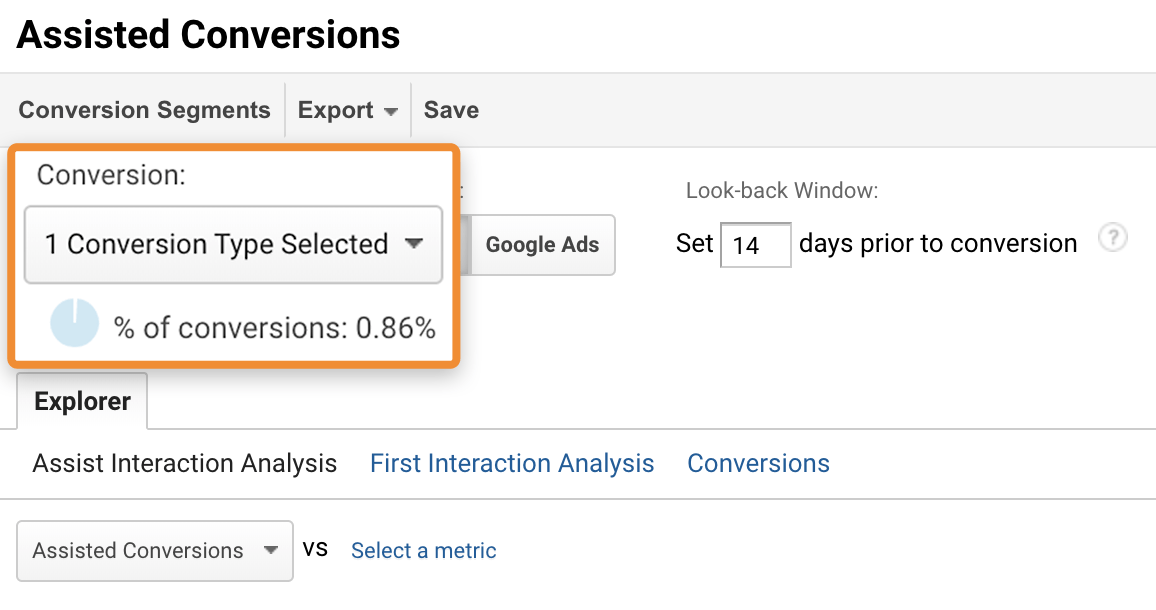
Then select a proper look-back (attribution) window. This is the number of days that you want to take into account before the conversion.
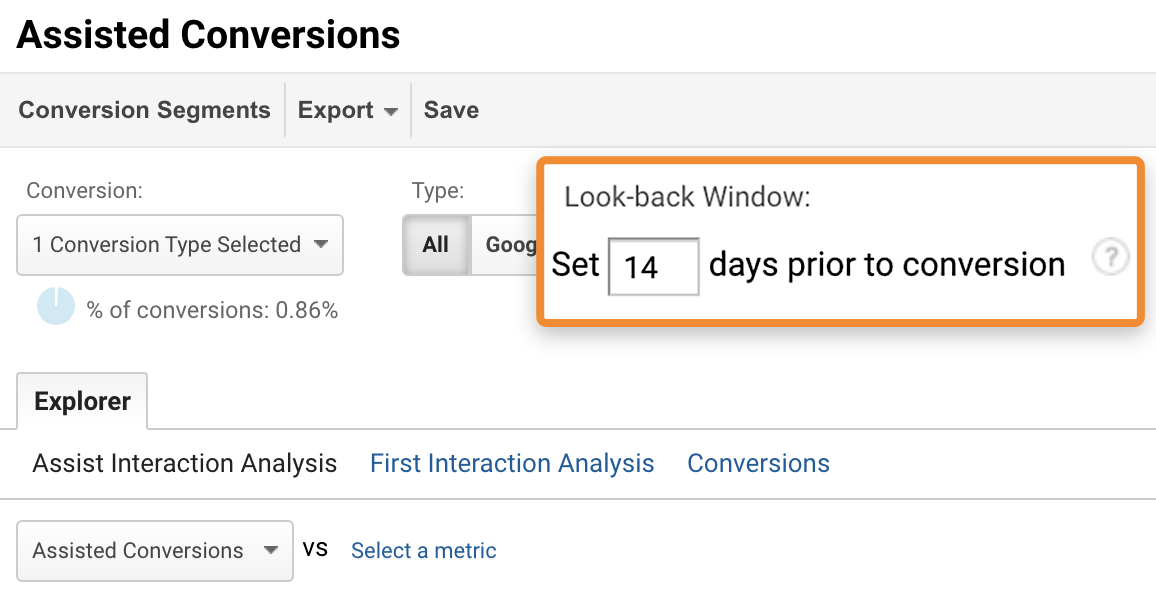
Make sure to adjust this based on the length of your business’s sales cycle.
For example, B2B should generally have the longest attribution window because the length of the decision-making process before conversion is longer than, say, buying clothes online. So, play around with the window, and check what it does to the number of assisted conversions.
Then all that’s left is to compare the data over two periods:

You’ll get an overview of how each channel contributes to conversions, and a comparison between the set periods:
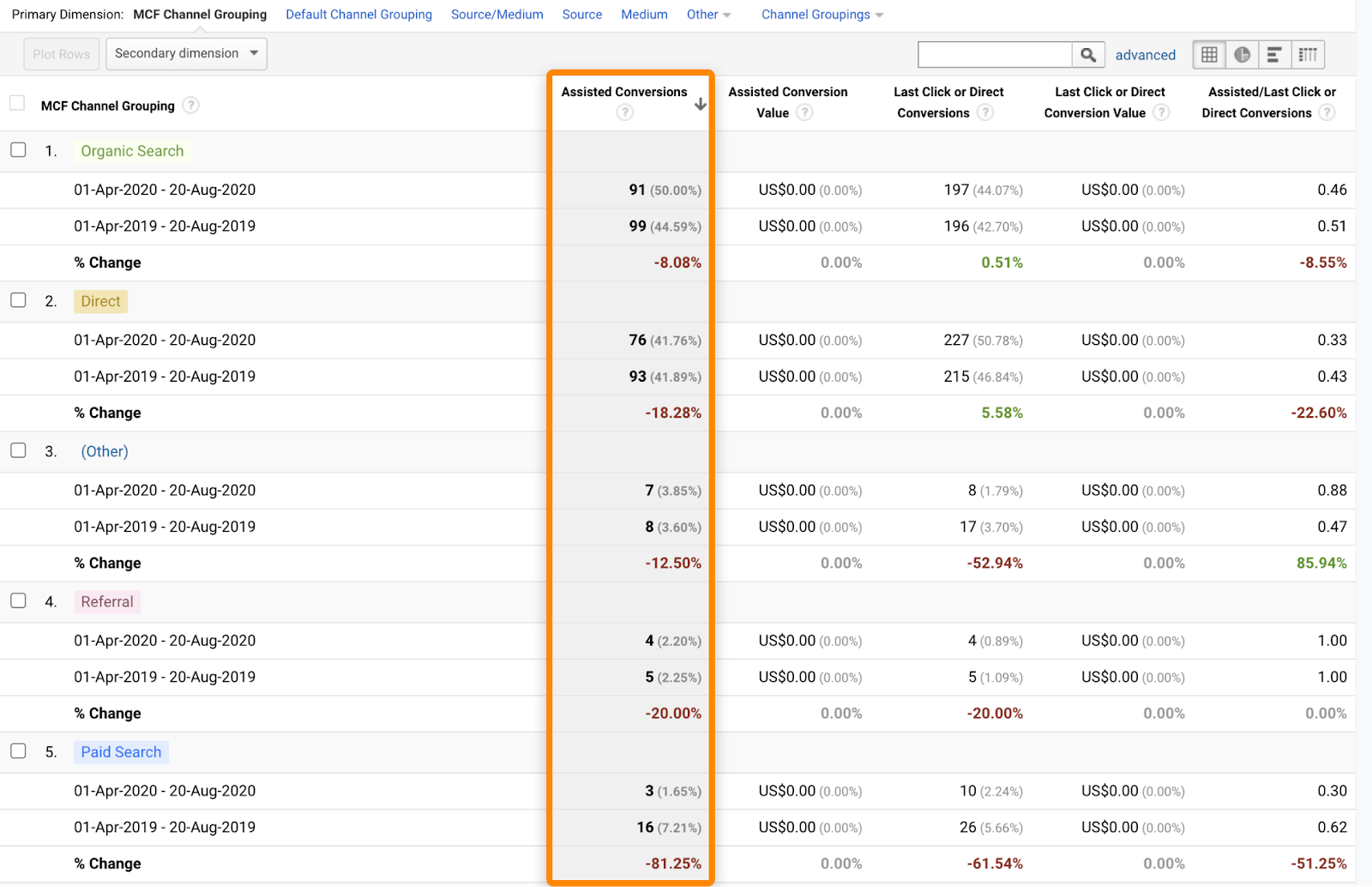
When you’re finished with this, you can also play around with the rest of the Multi-Channel Funnels reports. You can find the Model Comparison Tool there, which is the only report in GA that allows you to apply other attribution models. You’ll get a better understanding of how each of your channels work during your customers’ journey. Check this excellent article to learn more.
Final thoughts
I’m convinced that you don’t need more than three KPIs for any channel. However, this doesn’t mean that you shouldn’t measure other things.
Keeping track of other meaningful metrics that correlate with KPIs is a way to assess your day-to-day SEO work. For example, it would be nearly impossible to improve your SEO KPIs if search engines can’t properly index your pages.
So, you can get all sorts of actionable insights from Google Analytics, set up thresholds that determine successful link building campaigns, run technical SEO audits, and so on.
And one more thing…
Being “data-driven” is something that seems to encompass today’s marketers. But understanding why something happens from GA or GSC data is challenging as it’s mostly quantitative data. It’s essential to keep that in mind and understand that this data is no substitute for talking to customers, common sense, and occasionally, gut feeling.
Got any questions or other KPIs to share? Ping me on Twitter.
